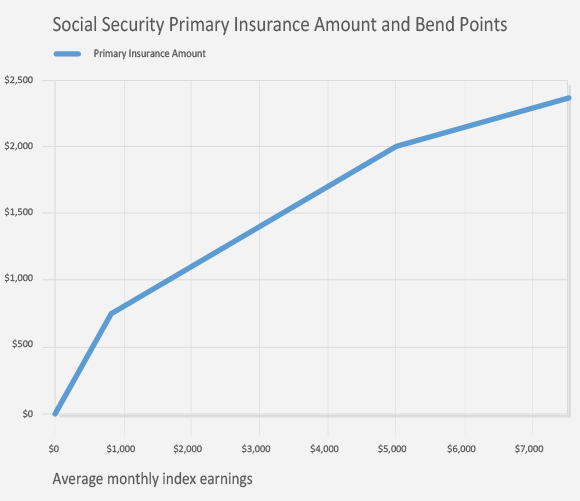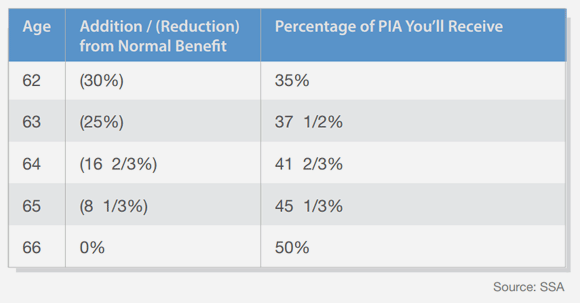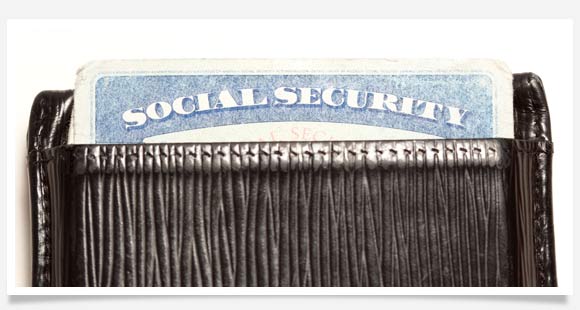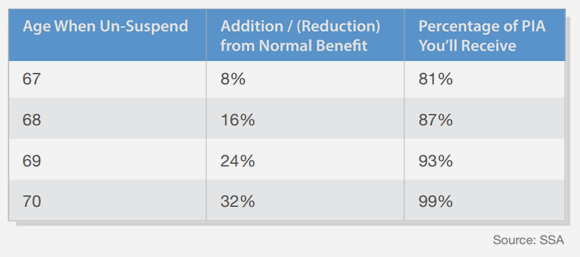
A MOTLEY FOOL SPECIAL REPORT
The Motley Fool, November 2015

A MOTLEY FOOL SPECIAL REPORT
The Motley Fool, November 2015


If you're like most people, you're counting on Social Security to help you make ends meet when you retire, but you don't know everything you should about what to expect from the program or how to make the most of the benefits you've earned. But simply by signing up to get this Social Security guide, you've already overcome the procrastination that keeps many people from ever learning how to get more from Social Security. And as complicated as Social Security can be, you should be able to get a lot of useful information from this guide in just minutes.
To help you make the best possible choice with your Social Security benefits, we've put together this guide. By the time you've finished reading this guide, you'll learn about these key aspects of Social Security:
page 1

First, take a look at this decision tree. It will give you an idea of what to expect from this guide, and you can refer back to it at any time throughout the process to keep the big picture in mind.
Section 1
Yes
No
page 2

Yes
The Windfall Provision may apply.
Continue to question 2b.
No
Yes
Social Security forfeiture provision could apply if your work income is above applicable limits.
Continue to Section 3
No
page 3

Yes
No
Working longer will give you a greater benefit amount.
Continue to question 3c.
Yes
Working longer will increase.
Continue to question 3c
No
Yes
Consider whether taking benefits later could reduce your taxes.
Continue to question 3d
No
Consider whether taking benefits later will result in higher taxes.
Continue to question 3d.
Yes
Consider the options of filing but later withdrawing your application for Social Security within 12 months. Note that because of legislation signed in November 2015, this strategy will no longer be available of April 30, 2016.
Continue to Section 4
No
Consider whether taking benefits later will result in higher taxes.
Continue to Section 4.
page 4

Yes
What's the relationship between the family member and worker?
Spouse: If spouse, then spousal benefits can apply if the spouse is 62 or older.
Continue to question 4b.
Child: If child, then child benefits can apply if the child is unmarried and under 18, or no more than 19 and is still in high school, or disabled if the disability began before age 22.
Continue to question 4b.
No
What's the relationship between the family member and the deceased worker?
Spouse: If spouse, then survivor's benefits can apply. Spouse can receive benefits if age 60 or older and disabled or caring to a child under 16.
Continue to question 4b.
Child: If child, the survivor's benefits can apply. Child can receive benefits if under age 18 or no more than 19 and still in hight school, or disabled if the disability began before age 22.
Continue to question 4b.
Yes
The Family Limit may apply.
Continue to question 4c
No
Yes
The Windfall Elimination Provision may apply.
Continue to Section 5
No
page 5

If only one spouse worked or one spouse made much more than the other, focus on the higher earner's regular benefits and the lower earner's spousal benefits.
Continue to question 5b.
If both spouses earned close to the same amount, focus on benefits based on one's own work history and less on spousal benefits.
Continue to question 5b.
Yes
Consider strategies such as file and suspend or file as a spouse first. Because of legislation signed in November 2015, this strategy will no longer be available as of April 30, 2016.
Continue to question 5c.
No
You'll be deemed to file for your own benefits and for spousal benefits at the same time.
Continue to question 5c.
If it's important, then having the higher earner delay taking benefits makes more sense even if it isn't in the higher earner's own best interest.
Continue to question 5d.
If it's not important, then the advantage of delaying isn't as great.
Continue to question 5d.
page 6

Yes
Filing earlier could get you more in total benefits before they reach adulthood and child benefits stop. But for a permanently disabled child, filing later could maximize lifetime benefits for the child.
Continue to question 5e.
No
Concentrate on your own and your spouse's benefits.
Continue to question 5e.
Yes
Consider the same alternatives discusses in question 3d - "Do you want to maintain flexibility in your decision?"
Continue to Section 6.
No
Concentrate on your own and your spouse's benefits.
Continue to Section 6.
page 7

Yes
No
You're not entitled to benefits based on your ex-spouse's work record.
Continue to Section 7.
Yes
You're not entitled to spousal benefits based on your ex-spouse's work record, but you may be entitled to survivor's benefits if you married after reaching age 60
Continue to Section 7.
No
You're entitled to spousal and survivor's benefits based on your ex-spouse's work record.
Continue to Section 7.
page 8

Apply online at http://www.socialsecurity.gov/retireonline within three months of turning 62 or older, and want to get benefits no more than four months in the future. Can't already get benefits, and can't have applied for benefits in the past. Good for regular and spousal benefits.
Toll-free 800-772-1213
In person at the Social Security Office
We know that this decision tree might look large and intimidating, but don't let that scare you -- it covers a huge amount of ground and includes just about everything you should consider in evaluating your Social Security benefits. Moreover, we'll be with you through the entire process, leading you step by step through these topics, in the same order as the decision tree above. We'll also give you some additional details on things to watch out for and areas where you might want to get more guidance. So without further ado, let's turn to the first threshold question everyone needs to know: whether you're eligible for benefits from Social Security.
page 9


In order to receive Social Security retirement benefits based on your own earnings record, you need to work a minimum period of time and earn a minimum amount within the Social Security system. The Social Security Administration measures this through the use of its credit system, with workers needing to collect 40 credits in order to qualify for retirement benefits. Historically, that meant that you had to reach the credit-earning threshold in at least 40 calendar quarters during your career in order to collect Social Security. Nowadays, you can collect up to up to four credits per year regardless of when during the year you work. For 2015, each $1,220 you earn gets you a credit, so working $4,880 gets you the maximum for four credits and puts you on track to become eligible within 10 years.
The second requirement for Social Security eligibility is that you have to reach the minimum age at which the SSA pays benefits. Social Security allows recipients to start collecting retirement benefits as early as age 62, even though full retirement age for those retiring in 2015 is 66.
Finally, to be part of the Social Security system, you need to be either a U.S. citizen or be lawfully present within the U.S. as a permanent resident, lawful nonimmigrant, or with a legally acknowledged protected status like political asylum.
As you'll see below in the discussion of family benefits, you might be eligible to receive Social Security benefits based on another person's work history under certain conditions, and family members might be eligible to receive benefits based on your work history even if you weren't yet eligible. So when considering your Social Security eligibility, be sure to check not just on benefits based on your own work history but also on other family members like a spouse or parent.
page 10


One of the most complicated aspects of Social Security involves calculating how much you'll receive when you retire. In general, your Social Security benefit amount is based on how much you earn during your career and when you decide to start collecting monthly payments.
Specifically, Social Security looks at the 35 years during your career in which you had the highest earnings after adjusting for inflation. The maximum amount of earnings you can use for any given year is the maximum on which workers pay Social Security taxes, which changes every year based on rises in average worker pay. For 2015, the wage limit for Social Security is $118,500. There's an inflation adjustment that applies to every single year you've worked during your career, and once you've made that adjustment, you add up the top 35 years' results, and after dividing by 12, you have what's known as average indexed monthly earnings.

The next step Social Security follows is to take the average indexed monthly earnings and run it through a formula to determine what's called your primary insurance amount or PIA. You'll get $0.90 for every dollar up to $826 in average indexed monthly earnings. From $826 to $4,980, you get an additional $0.32 for every dollar of extra earnings, and for earnings above $4,980, you get an extra $0.15 for every dollar. Add those amounts up and you have your PIA.
The PIA is important for a number of reasons. First and foremost, it represents the monthly benefit you'll receive if you start collecting Social Security at your full retirement age. But it also acts as the baseline for other benefit calculations. For instance, as we'll discuss further below,
page 11

the SSA calculates spousal and survivors benefits based on a certain percentage of your PIA.
Claiming at an age other than full retirement age will increase or reduce your benefits from the PIA. If you retire early, then your benefits are reduced by five-ninths of a percent per month up to 36 months, and then by five-twelfths of a percent per month beyond that. In practical terms, that means that if your full retirement age is 66 and you retire at age 62, your benefits will be 25% less than your PIA.
Conversely, if you wait until after full retirement age to claim benefits, you'll get delayed retirement credits that will increase your monthly payment. The credit is 8% per year. The following table looks at various reductions and additions by age.
Again, these benefit calculations assume that you're only eligible for benefits based on your own work history. Those who qualify for Social Security under a spouse's or ex-spouse's work history will want to compare benefits available by that method, as we'll discuss further in the family section below.

page 12


For the most part, if you get pension benefits from a private employer, then it doesn't affect your Social Security benefits. The rationale for getting both Social Security and private pension benefits is that you were paying taxes into the Social Security system while also making contributions to a private pension. By contrast, some government and public-sector workers don't pay Social Security taxes, with their public pensions being the only retirement income source into which they make contributions.
If you work in the public sector your whole life, then you won't have a work record that makes you eligible for Social Security at all. Where things get tricky, though, is when you worked part of your career for a private employer and part for a public employer. In that case, you might well have earned Social Security benefits under your own work record, but if you use the regular calculation for determining your monthly payments from Social Security, they'll produce figures that are higher than Social Security's policymakers believe are fair.
As a result, a provision called the Windfall Elimination Provision reduces the amount of Social Security benefits that you're allowed to receive. As you can see in the chart below, how much your benefits get reduced depends on how many years you worked in jobs in which you paid taxes into the Social Security system.
page 13


For those who've worked at least 30 years outside the government, no reduction occurs. But for those who've had 20 or fewer years of substantial earnings from private sector work, reductions can be as much as $408 per month, depending on the year in which you became eligible for benefits. In no event, though, will your Social Security be reduced by more than half of the amount of the pension you receive.
page 14


Many people want to get Social Security benefits as soon as possible and therefore apply at age 62 even before they actually retire. By doing so, they hope to supplement their wage income. But those who take Social Security before reaching full retirement age can end up losing some of their benefits if they earn more than a set amount in a given year.
For 2015, if you'll be younger than full retirement age all year and you earn wage or salary income of more than $15,720, then you'll lose $1 of annual Social Security benefits for every $2 above that limit that you earn. So if you have $20,000 in work income, then your total Social Security payments for the year will be reduced by $2,140, or half of the $4,280 by which your income exceeded the SSA's limit.
Those who'll reach full retirement age at some point during 2015 have a higher limit. For them, any earnings above $41,880 reduces your Social Security benefits by $1 for every $3 you exceed that amount.
Because of these forfeiture provisions, you should think carefully before taking Social Security early if you still intend to work. In many cases, you might prefer simply to wait until full retirement age -- at which point you can collect Social Security and still work an unlimited amount without any impact on your benefits.
page 15


Once you understand how Social Security calculates your benefits and what goes into those calculations, it's easier to figure out what you can do that will affect your benefits. For single retirees who don't have family members who are eligible to receive Social Security on their work history, the choices to make the most of your benefit options are relatively straightforward.
The first and least complicated way to boost your Social Security benefits is to make sure you take maximum advantage of your work history. Because Social Security looks at up to 35 years of earnings in determining your benefit amount, working long enough to accumulate a 35-year earnings history will help you boost the average indexed monthly earnings that go into the Social Security formula. If you have a shorter career, you'll have zeros for some of those years, and that will bring your average earnings down considerably.
Even if you've already worked 35 years, you can still boost your benefits if you can get a job that pays more than a job you had earlier in your career. Indexing for inflation can make it harder to compare across decades, but given
page 16

the upward trajectory in earnings that most workers have during their careers, extending your work life another year or two can replace low-earning early years with higher-earning years that can raise your benefits.
The other major way to boost your benefits is to time your decision on when to start taking Social Security payments. As we discussed above, the longer you wait to receive Social Security between age 62 and age 70, the more you'll receive each month. This gets complicated, though, because when you choose to delay receiving Social Security, you essentially give up monthly payments that you could have chosen to receive. As a result, you have to consider the tradeoff between getting smaller payments over a longer period of time versus getting larger payments over a shorter period.
For instance, take a simple case in which your primary insurance amount is $1,000. If you take Social Security at age 66, you'll receive $1,000 per month because you're at full retirement age. Taking Social Security early at age 62 will result in a 25% reduction in benefits, giving you $750 per month. Waiting until age 70 will give you 32% in delayed retirement credits, raising your monthly payment to $1,320.
It's easy to see that waiting from age 62 to age 66 will give you a $250 monthly increase in your Social Security
page 17

payment. But that delay required you to give up 48 months' worth of $750 Social Security checks, or $36,000. For you to “earn” back that $36,000 at $250 per month, it'll take you 12 years -- even if you don't consider at all the time value of having that money sooner under the age-62 option. Similarly, waiting until age 70 compared to age 62 will cost you $72,000 in exchange for an extra $570 per month -- and that'll take 10 1/2 years of increased payments to break even.
For its part, the government's General Accounting Office has said that someone who lives to average life expectancy can expect to receive roughly the same amount in benefits regardless of when they start getting Social Security. That's the general idea behind the adjustments that Social Security makes to your payments based on your starting age.
Yet the same percentage reductions for taking Social Security have been in place since the 1960s, therefore failing to reflect the increases in life expectancy over the past half-century. Now, Americans at retirement age can expect to live well into their 80s, making Social Security delays look a lot more appealing.
As you can see, the biggest uncertainty when it comes to when you should take Social Security involves your life expectancy. If you knew that you would pass away before you reached age 70, then it would obviously make no sense at all to delay Social Security payments that long -- again, assuming that you have no surviving family members eligible to claim benefits on your work history. If you knew you'd live to 100 or more, then waiting until 70 would be well worth it to collect those higher payments for decades.
page 18


Another key factor in when you take Social Security is whether you'll have to pay income taxes on the monthly payments you receive. Depending on how much you receive from Social Security or other sources, you might have to include a portion of your benefits on your tax return as taxable income, and that can effectively reduce your after-tax “take-home pay” from Social Security.
To figure out whether you'll owe income tax on your Social Security benefits, you have to add up all of your income, including any wages or salaries, business income, and investment income. Then, take that figure and add in half of your Social Security benefits for the year. If you're single and the total is between $25,000 and $34,000, then you'll have to add $0.50 for every $1 of income above the limit to your taxable income, up to a maximum of half of your total Social Security benefits. If the total goes above $34,000, then the amount treated as taxable income rises to $0.85 for every $1 over the limit. The corresponding figures for joint filers are $32,000 and $44,000 for the 50% and 85% limits respectively.
Many people see their income drop after they retire. Because of that, waiting to take benefits until after you stop working can keep you from having to lose some of your benefit income to income taxes. Looking at your own particular tax and income situation can give you a better sense of how taxes will play a role in your Social Security decision.
page 19


It’s also important to understand that the best Social Security decision for you doesn’t mean simply maximizing the amount of money you receive over your lifetime. For many people, getting smaller payments earlier will enhance their quality of life in a way that they’d say is worth the financial sacrifice later in life, regardless of what actuarial tables and mathematical formulas would tell you.
Yet this personal aspect of Social Security can cut both ways. If you have other retirement savings, such as IRAs or 401(k) retirement accounts, then you can choose to tap those sources of income first, leaving Social Security to grow over time. Making that decision can greatly reduce the risk of your running out of money in retirement, as the larger guaranteed monthly payments will give you a much higher base income even if you use up all your other resources.
As you’ll see in greater detail under the family discussion, there are a couple of strategies that you can use to hedge your bets on the Social Security decision. One strategy involves withdrawing your Social Security application in order to collect greater monthly payments later on. According to current rules, you can file a Social Security claim and start collecting benefits, and then change your mind as long as 12 months hasn’t gone by. All you have to do is repay the benefits you’ve collected, and you’re treated as though you never applied in the first place and can reapply at the future date of your choosing.
Until recently, another strategy involved filing for benefits at full retirement age or later but then immediately suspending them. That gave you the choice of collecting higher delayed benefits at a later age or requesting that your suspended benefits be reinstated by paying you
page 20

a lump sum. Changes to Social Security law passed in November 2015 took away the lump-sum option for those suspending their benefits after April 2016, so this strategy is only available until then.
In the end, when to take Social Security is a highly personal decision. But it’s clear that the decision has a major impact on the amount of benefits you receive, and so making the best one can help you maximize your benefits.
Maximizing your Social Security involves earning as much income as possible and then being smart about when to collect benefits. But if you have family members who can also claim benefits on your behalf -- or on whose work history you can get additional benefits -- then the question gets to be a lot more complicated. Before we bring those complex strategies into the equation, let’s take a look at what benefits family members are entitled to receive.
page 21


If you're single and don't have children, then Social Security is all about you. But for those with families, Social Security can also provide benefits to spouses and children, and therefore, maximizing your Social Security benefits requires understanding how your decisions can affect them.
Social Security's history spans back to a time when family structures more commonly included a single earner. Yet originally, Social Security didn't provide any family benefits, and it was only in the 1960s that lawmakers created new categories of beneficiaries. Now, family members can get benefits under certain circumstances both during your lifetime and after your death.
page 22


Under current law, your spouse can receive retirement benefits based on your work history. Spousal benefits generally supplement any benefits earned under your spouse's own work history, although as we'll see in the more complex strategies below, there are subtle nuances to that general rule.
As an example, let's take a married couple, Pat and Chris. Pat has had higher earnings than Chris throughout their careers, and so Pat's primary insurance amount is larger than Chris's based on their respective work histories. If Chris starts collecting Social Security spousal benefits at full retirement age on Pat's work history, then Chris will receive one-half of Pat's full retirement benefit. But Chris has the same right to receive payments as early as age 62, and doing so leads to similar reductions in benefit amounts. Those reductions are different from the early-retirement reductions for your own work history, as listed below.

page 23

Note that there are no delayed retirement credits for spousal benefits, which means that waiting until after full retirement age to claim them doesn't result in any additional payment amount.
One thing to understand is that you don't simply add spousal benefits on top of the regular benefits you're entitled to receive on your own work history. For instance, if Chris claims both regular and spousal benefits, then Chris's regular benefit will reduce the amount of the spousal benefit, limiting Chris to the larger of the two. In addition, if Chris claims Social Security early, Chris is deemed to have claimed both regular benefits under Chris's work history and spousal benefits under Pat's work history at the same time, and Chris won't have the choice to take only spousal benefits while letting those regular benefits grow.
At full retirement age and beyond, though, Chris has more latitude. At that point, Chris can apply for spousal benefits only and allow any benefit from Chris's own work history to keep growing due to delayed retirement credits. Later, Chris can shift to those larger benefits, getting the best of both worlds.
In addition to spouses, eligible children can receive Social Security benefits on your work record. Children's benefits are also based on your full retirement benefit, with each child potentially getting up to half of your benefit amount.
The requirements for children to get benefits on your record are quite strict. To qualify, the child must be unmarried and either under age 18 or no more than 19 years old and a full-time high-school student. An exception for disabled children pays benefits to adult children if the disability began before the child reached age 22.
Moreover, Social Security imposes a family limit on the amount of benefits payable under any one family member's work history. The total is specific to family size but varies between 150% and 180% of that person's primary insurance amount on an annual basis. So in our example, if Pat, Chris, and their children were all eligible to receive benefits under Pat's work history, the amounts paid could be reduced if the total would otherwise go above the family limit. Note, though, that there's no lifetime limit that applies to these benefits; in most cases, they continue for life.
page 24


Social Security also makes provisions for your family after your death. The rules for survivors benefits are in some ways similar to the benefits family members can receive during your lifetime, but there are also some major differences.
Again, let's take Pat and Chris and assume that Pat passes away. Chris can get survivors benefits as early as age 60, or even earlier at age 50 if Chris was disabled before your death or became disabled within seven years after your death. In addition, if Chris is caring for their children under age 16, then Chris can receive survivors benefits regardless of age.
The amount Chris will receive in survivors benefits depends on age. If Chris is at full retirement age, the benefit is 100% of Pat's benefit amount. That amount currently falls by roughly 0.4 percentage points for every month before full retirement age, with those claiming at the earliest age of 60 getting 71.5% of your benefit amount. Disabled widows and widowers get the same 71.5% between age 50 and 59, and surviving spouses caring for children under 16 are eligible to receive 75%.
For children, the same eligibility rules apply for survivors benefits that apply while you're still living. Children under age 18, or up to age 19 for full-time high-school students, can get a 75% benefit. The same provisions for disabled adult children also apply.
Social Security imposes family maximums on the total amount that survivors can claim on a deceased person's work history. The program can therefore reduce the amount of benefits that certain survivors receive on an annual basis if paying them full benefits would cause the total to exceed the family maximum for that year.
page 25


As we saw above, getting a government pension can cut into your Social Security benefits because of the Windfall Elimination Provision. But there's another way in which you can get less from Social Security if you worked for the government long enough to earn a public pension outside the Social Security system.
The Government Pension Offset differs from the Windfall Elimination Provision in that it applies to spousal or survivors benefits. The rationale behind the Government Pension Offset is that since you're covered under a government pension in your own right, your Social Security benefits should be reduced in the similar way as those who are entitled to Social Security both on their own work record and through a spouse.
Again, let's take an example. Say that Pat worked in the private sector but Chris had a government job. Chris would ordinarily be entitled to full spousal and survivors benefits on Pat's work record. But if the Government Pension Offset applies, then Chris will have those Social Security benefits reduced by two-thirds of the amount of any government pension income Chris receives. In some cases, Chris will get no Social Security at all if the amount of pension income is high enough.
Not all pensions are subject to the Government Pension Offset. Pensions that aren't based on your earnings are sometimes exempt from the provision, and those who've paid into the Social Security during the last five years of their government service can also avoid it. But in general, government workers need to understand the impact of the provision on what they expect from Social Security.
page 26


Figuring out the best Social Security strategy becomes much more complex when you bring other family members into the equation. Coordinating your benefits with those of your spouse becomes crucial if you want to make the most of all the Social Security money available to you. Let's take a look at some of the family dynamics involved and then get into some of the specific strategies you can follow.
page 27


One-earner families vs. two-earner families The simplest situation to navigate involves families in which only one spouse works. In that situation, both spouses can only claim on the working spouse’s work history, and so the question simply becomes when the working spouse should claim regular retirement benefits and when the non-working spouse should claim spousal benefits.
When both spouses work, Social Security strategies get more complicated. Theoretically, each spouse then becomes eligible both for retirement benefits on their own work record and for spousal benefits on their spouse’s work record. Then, the main question becomes how much each spouse earns and therefore how their retirement benefit amounts compare. When the lower-earning spouse is entitled to just a tiny fraction of the benefits of the higher-earning spouse, then you’ll typically use strategies similar to those that one-earner families use. When benefit amounts are much closer together, though, then focusing on your own benefit generally makes the most sense.
page 28


Until recently, one threshold question that couples had to consider is whose work record to use to claim benefits. On its face, the question might seem quite simple: pick whichever benefit will pay you the most money. Because spousal benefits are typically based on one-half of your spouse’s regular benefit amount, it’s easy to compare whatever benefits you’d be entitled to receive on your own work history against your potential spousal benefit.
That used to be a complicated question for couples, because past law made a distinction based on age. If you hadn’t reached full retirement age, then you didn’t have a choice to claim one benefit or the other: you were automatically deemed to have made a claim on both benefits if you were eligible for them. For example, if you filed for a spousal benefit right when you turned 62, Social Security treated it as if you had also filed for your own retirement benefit at the same time. Therefore, you would end up getting a single benefit composed of two parts: one part being your own retirement benefit, and the other being any additional spousal benefit to which you were entitled.
By contrast, under previous law, if you waited until full retirement age or later, then you would have the option of filing only for a spousal benefit. That was highly advantageous in some cases, because delaying when you start receiving retirement benefits on your own work history could let the eventual amount of those benefits grow -- even while you were still receiving spousal benefits along the way.
New laws passed in November 2015 changed these rules, though, taking away the distinction between those who had reached full retirement age and those who hadn’t. Regardless of age, if you file for benefits, you’re deemed to have made a claim both for your own benefits and for spousal benefits.
The other factor involved with spousal benefits is that in order to qualify for them, your spouse has to have filed for retirement benefits. In other words, using our Pat and Chris example, if Chris wants to claim spousal benefits on Pat’s work history, then Pat has to have filed for regular benefits. As we’ll see below, just because Pat has to have filed for benefits didn’t necessarily eliminate the ability to defer receiving those benefits until later under prior law, but it did introduce some added complexity into the mix. In some cases, you would want to claim benefits based on your own work record because requiring your spouse to file for benefits would more than offset any benefit you’d receive from getting spousal benefits instead. However, new laws have had a dramatic impact on this aspect of Social Security strategy, and the ability to get extra benefits based on coordinating your own benefits with your spousal benefits has nearly disappeared, as described below
page 29


Earlier in this report, we discussed how single Social Security recipients only had to focus on themselves in order to make the smartest decision on when to start taking benefits. But for married couples, the consequences of your Social Security timing decision don't just affect you -- they also affect whether and when your spouse can claim spousal and survivors benefits, and how much those benefits will be.
The key fact with respect to Social Security timing is that survivors benefits are tied to the actual benefit that the deceased spouse received. So if the deceased spouse filed early, it means that the surviving spouse will receive reduced survivors benefits for life. By contrast, waiting will increase not only the recipient's eventual monthly check but also the survivors benefits of the surviving spouse.
As an extreme example, let's again turn to Pat and Chris and assume that the higher-earning Pat has a terminal condition. If you only look at Pat's own benefits, then claiming as soon as possible will maximize the benefits that Pat receives. But when you consider Chris and the spousal and survivors benefits that Social Security will pay, that equation can change, and it could be far better for the family as a whole if Pat waits as long as possible before claiming -- even if Pat ends up getting no benefits at all before death.
The reason this is the case is that spousal and survivors benefits are essentially a free extra Social Security benefit that married couples receive. Those extra benefits have no value for a single person, so they don't enter into the decision-making process. But when there's a spouse to receive those extra benefits, they can dramatically affect the calculations in favor of waiting.
page 30


Because of the age restrictions on children eligible to receive Social Security benefits, few retirees have to take children's benefits into consideration. However, if you have an eligible child, planning around the benefits your child would receive can make a difference in the best time to file.
The most common case involves filing as early as possible if your child is currently eligible for benefits but will be too old to claim benefits by the time you reach full retirement age. Depending on how many years the child will be eligible, you may need to incorporate a break-even analysis for your child's benefits into your broader benefits picture.
Conversely, if you have a disabled child, then it often makes sense to delay benefits longer. Because disabled children are entitled to children's benefits regardless of age, their long life expectancy can make it smart to maximize their monthly payments to cover that much-longer period.
page 31


Some of the best Social Security strategies were so good for those who took advantage of them that some lawmakers saw them as targets for elimination. One of these was the file-andsuspend strategy, which was a common and popular strategy to follow that was actually a lot simpler than many people thought.
The idea behind the file-and-suspend strategy was simple. Again using Pat and Chris as an example, the couple had two competing interests: they wanted the lower-earning Chris to get spousal benefits as soon as possible but also for the higherearning Pat to maximize benefits by waiting as long as possible and collect maximum delayed retirement credits. These two interests apparently conflict, because in order for Chris to collect spousal benefits, Pat must file for regular benefits.
But a technical SSA rule allows Pat in this case to file for benefits but then immediately turn around and suspend them. By doing this, Pat won’t receive the monthly Social Security checks that filing for benefits would usually provide. However, even though Pat isn’t getting paid, the filing fulfills the technical requirement that allows Chris to receive spousal benefits.
The end result of the file-and-suspend strategy is that Pat and Chris are able to get spousal benefits that they otherwise wouldn’t have received, on top of the family getting higher delayed payments when Pat finally does lift the suspension and start taking monthly checks. Without using this simple strategy, many families simply wait on those spousal benefits until a later date -- effectively missing out on thousands of dollars of benefits over months or even years of eligibility.
Laws passed in November 2015 took away the file-and-suspend strategy, with a roughly six-month delay that leaves the option open through April 2016. After that, suspending your benefits will prevent your spouse from claiming spousal benefits, taking away the primary advantage of filing and suspending in the first place.
page 32


A similar but subtly different strategy is known as filing as a spouse first. It, too, took advantage of a special filing requirement, and it, too, has been eliminated going forward. In many ways, it looked like the mirror image of the file-and-suspend strategy.
Taking the above example, how the strategy often worked was that Chris filed to receive regular Social Security retirement benefits. Meanwhile, Pat delayed taking Social Security in order to earn delayed retirement credits.
When Pat reaches full retirement age, though, Pat can file for benefits as a spouse first, restricting the scope of the Social Security application to spousal benefits only. Doing so still allows Pat to earn delayed retirement credits on Pat’s own Social Security benefit, but it also produces what amounts to a free spousal benefit for Pat based on Chris’s work history.
Note that the filing as a spouse first strategy requires that Chris have at least some work history that produces Social Security benefits. If Chris never worked, then Pat and Chris won’t be able to use this strategy effectively. Nevertheless, by maximizing Pat’s eventual benefit while producing ample cash flow along the way, the filing as a spouse first strategy can lead to a larger total amount of Social Security payments for the family as a whole.
The November 2015 law took away the filing as a spouse first strategy going forward by removing the ability for spouses to restrict the scope of their application to spousal benefits only, even if they had reached retirement age. The new provision deems all filings to include both one’s own benefits and any spousal benefits, and its effective date includes anyone who turns 62 in 2016 or later. As a result, some are still eligible to use the filing as a spouse first strategy, but younger spouses won’t be able to take advantage of the strategy.
page 33


One reason why the decision of when you start taking Social Security benefits is so important is that once you make your choice, you often can't go back and change your mind. Even if unexpected changes occur that would affect your decision-making process, your ability to adjust your Social Security strategy is limited once you've applied for benefits.
However, as we discussed briefly above in the discussion on your own benefits, Social Security does provide some latitude to those who need to reconsider their initial decisions on benefits. As long as you change your mind before 12 months has elapsed since you started receiving benefits, the SSA will give you the right to withdraw your initial Social Security claim. That will give you the latitude to re-apply at a later date, with the potential advantages including higher monthly payments at that time. You can only withdraw your application once during your lifetime; after the first time, you're stuck with your decision thereafter.
In order to withdraw your application successfully, you need to follow the SSA guidelines. To start, you'll need to fill out Form SSA-521, indicating the reason why you want
page 34

to withdraw your Social Security application. Then, once the form is complete, you'll send it to the SSA, which will then do its review and then tell you what has to happen next. Specifically, you have to return any benefits you've received to the SSA, although you won't owe interest or any additional fees on top of the regular amount of the benefits that the SSA paid you.
Another option you have once you reach full retirement age is to suspend your early benefit payments. Doing so will allow you to receive delayed retirement credits, albeit on whatever lower amount you received by claiming benefits early. For instance, say you took benefits at age 62 and decide to suspend them at age 66. Because you claimed early, your payments were reduced, and so you received only 75% of your primary insurance amount. But when you incorporate the 8%-per-year delayed retirement credits, you can boost your payouts substantially, depending on when you decided to un-suspend and start getting those payments again.
Obviously, this won't get you back to where you would have been if you had waited until age 70 without claiming in the first place. Nevertheless, suspending your benefits if you can afford it can put you in a stronger financial position down the road.

page 35


This strategy builds on the information above to allow you to take a one-year interest-free, tax-free loan from Social Security.
With this strategy, you begin collecting Social Security benefits -- and then deposit those checks into an interest-earning checking or savings account. You want to be depositing your benefits into an account that earns high interest rates, so open a new one if your current accounts aren't sufficient.
Eleven and a half months later (just to be safe), you go back to Social Security and as described in the previous section, submit Form SSA-521 to withdraw your Social Security application. The SSA will accept your mistake, but will ask you to return the money they've already paid you. That's OK. After all, you have the money safely stowed away and can now easily pay it back. You will only be asked to repay the benefits you've received -- meaning any interest you made while the benefits were in deposit is yours to keep. This is why a high-interest bank account is necessary for this to be worth your while.
On a final note, by adding at least another year to the date you officially collect Social Security benefits, you've simultaneously boosted your own payouts.
page 36


One big question that often comes up is how divorced spouses are treated under Social Security. You're always entitled to the benefits that you've earned under your own work history, but often, the payments you'd be entitled to receive as spousal benefits on an ex-spouses work history can be larger. SSA rules govern how benefits for divorced spouses work.
The most important rule divorced spouses need to know about Social Security is the 10-year rule. Let's turn again to Pat and Chris and assume that they're divorced. If the couple was married for 10 years or more, then Chris can claim spousal benefits based on Pat's work history as long as Chris meets some other requirements that we'll discuss below. With retirement benefits, that lets Chris claim early
page 37

benefits at age 62 as long as Chris hasn't remarried. If Chris does remarry, then Chris can typically get benefits based on Chris's new spouse's work history, but Chris's rights to get benefits on Pat's work history usually go away.
Divorced spouses often worry that their ex-spouses will have control over their ability to claim Social Security benefits. But that's generally not the case, as Social Security doesn't reduce benefits paid to your former spouse's new family even if you claim spousal benefits. Moreover, the decisions that your former spouse makes with Social Security benefits don't have an adverse impact on you. For instance, even if Pat doesn't actually start taking benefits, Chris can claim spousal benefits calculated as if Pat had waited until full retirement age in order to claim.
It also doesn't matter how many times your former spouse was married. Even if there are multiple former spouses, each has the right to claim Social Security benefits, and no one else's decision has an impact on your choices. In addition to spousal benefits while your former spouse is still alive, you can also claim survivors benefits after your former spouse's death. Here, the rules get a bit trickier but are more lenient in some situations. The same 10-year length-of-marriage rules apply, but remarriage involves additional questions.
As we saw above in our Pat and Chris example, it didn't matter when Chris remarried: Chris's right to get spousal benefits from Pat went away. But with survivors benefits, Chris can remarry without losing payments on Pat's work history as long as Chris waits until age 60 or later before tying the knot again. If Chris remarries before turning 60, though, then Chris loses those survivors benefits. Again, whether Pat remarries isn't important -- the only question is whether Chris remarries.
page 38


The SSA has tried to make applying for Social Security as simple as possible. Many people can apply for retirement benefits online, and the SSA website touts that completing the online application process via this web page -- http://www.socialsecurity.gov/retireonline/ -- can take as little as 15 minutes and save you a long and arduous trip to your local Social Security office. You can apply for Social Security online if you meet the SSA's qualifications. Specifically, you have to be within three months of your 62nd birthday or older when you apply, and you have to want to start receiving benefits no more than four months into the future. In addition, to use the online application process, you can't already have gotten benefits on your own Social Security work record,
page 39

and you can't have already applied for retirement benefits in the past. The online application will accommodate both regular and spousal benefits.
The online application process is as simple as possible. The process starts with a series of questions asking for personal information that's relevant to your Social Security status. The SSA recommends that you gather certain records before you apply, including information about current and former spouses, your military service record, and details about your recent employment. Then, you'll have the option to complete the online application itself, with the information you've already provided having filled in some of the blanks. Finally, you'll provide an electronic signature to verify your application.
After you apply, the SSA will review your application and then contact you if more information is needed. If the SSA discovers that you might be able to receive benefits based on someone else's work record, then you'll learn about that option as well. Once the SSA is satisfied with your application, processing begins, and you'll get a letter with the SSA's decision after the processing is complete.
If you don't want to apply online, then you have several other options. You can apply by phone toll-free at 1-800-772-1213, with hours from 7 a.m. to 7 p.m. Monday through Friday. In addition, you can visit your local Social Security office for assistance. Although those alternatives aren't as efficient as the online application, they can offer a chance to get more personalized help with your Social Security.
page 40


Congratulations on reaching the end of this guide! Social Security has plenty of intricacies, and the length of this guide should underscore all the nuances involved in making the best possible decisions. But having made it this far, don't let Social Security's complexity intimidate you. You can make smart choices to make the most of the Social Security benefits you've earned throughout your lifetime.
page 41

© 1995 - 2016 The Motley Fool. All rights reserved.